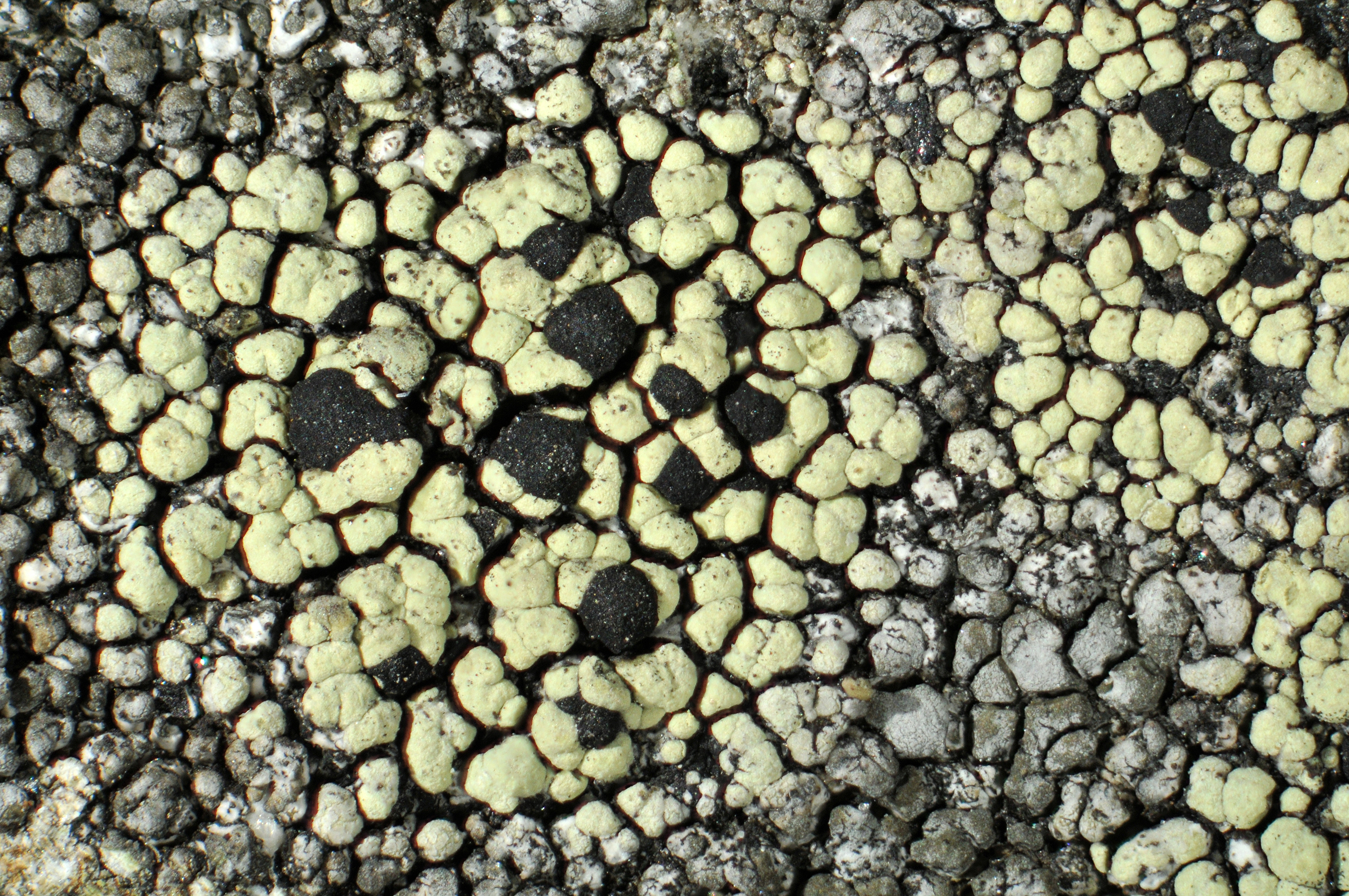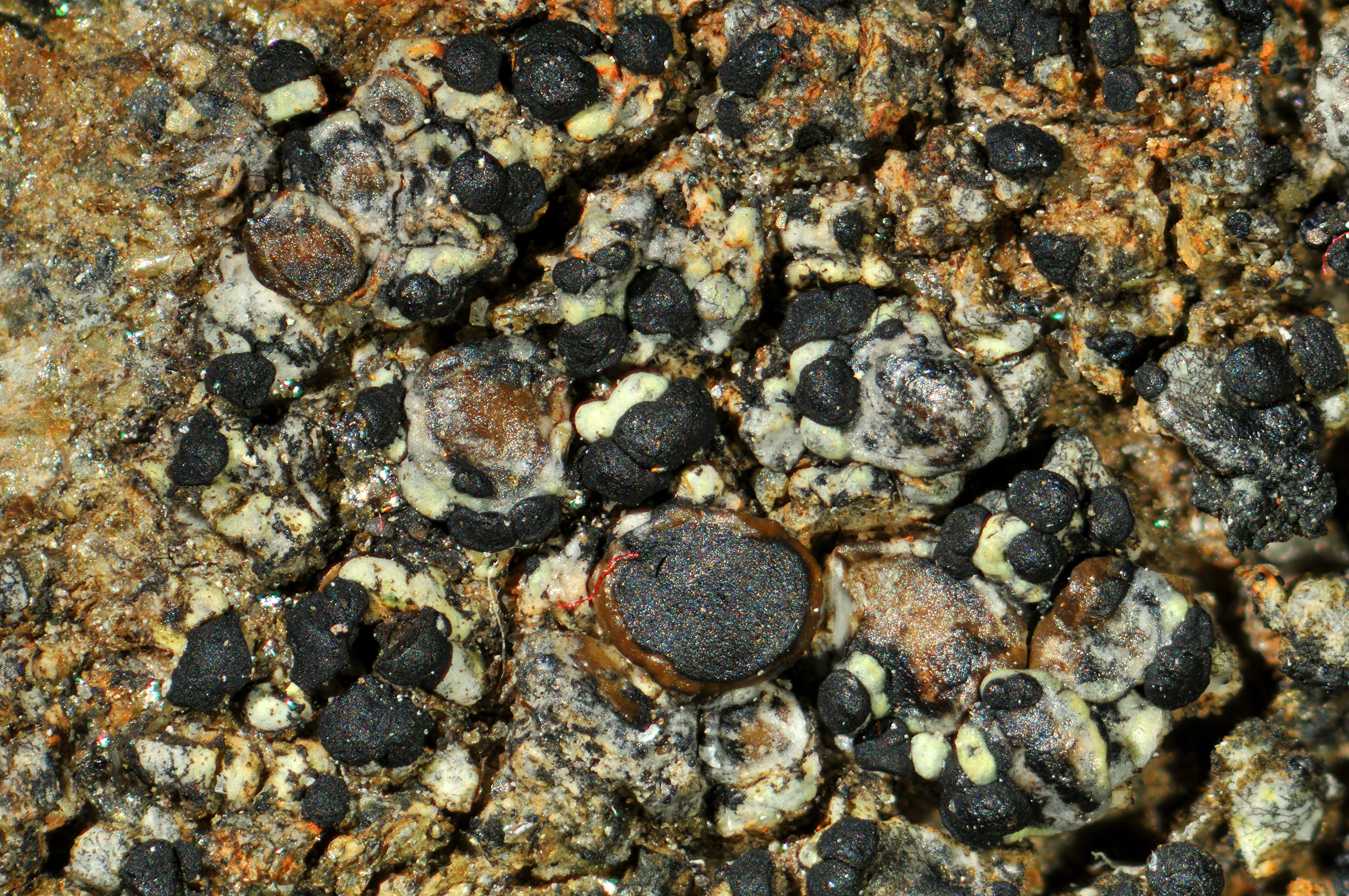Rhizocarpon viridiatrum
- Innhold
- Morphology
- Chemistry
- Habitat
- Comment
- Look-alikes
Morphology
Thallus areolate, usually up to 5 cm diam., growing in the thallus of various crustose lichens when young, later autonomous; hypothallus indistinct; areolae up to 1 mm diam., greenish yellow, dull, contiguous, more or less orbicular, plane to strongly convex, smooth; medulla KI– or KI+ faintly violet. – Apothecia up to 1 mm diam., black, epruinose, more or less orbicular, plane to strongly convex, usually becoming immarginate; excipulum brownish black in the rim, paler in the inner part, K+ faintly red; hypothecium dark brown, K–; hymenium colourless to pale brown; epihymenium brownish black, K+ red; no crystals or granules in the apothecia; ascospores 8 per ascus, muriform, dark brown, 19–30 × 10–14 µm. – Conidiomata not seen.
Chemistry
Rhizocarpic acid; spot tests: PD–, K–, C–.
Habitat
Parasitic in the thallus of various species of Aspicilia, Lecidea, and Tremolecia, at least when young. On siliceous rock, mainly in the lowlands.
Comment
The species is recognized by the yellow thallus, non-amyloid medulla, muriform ascospores and parasitic life habit. Rhizocarpon dinothetes is the only closely related Nordic species, but differs in growing on Protoparmelia species, forming smaller thalli, and having somewhat smaller ascospores.

